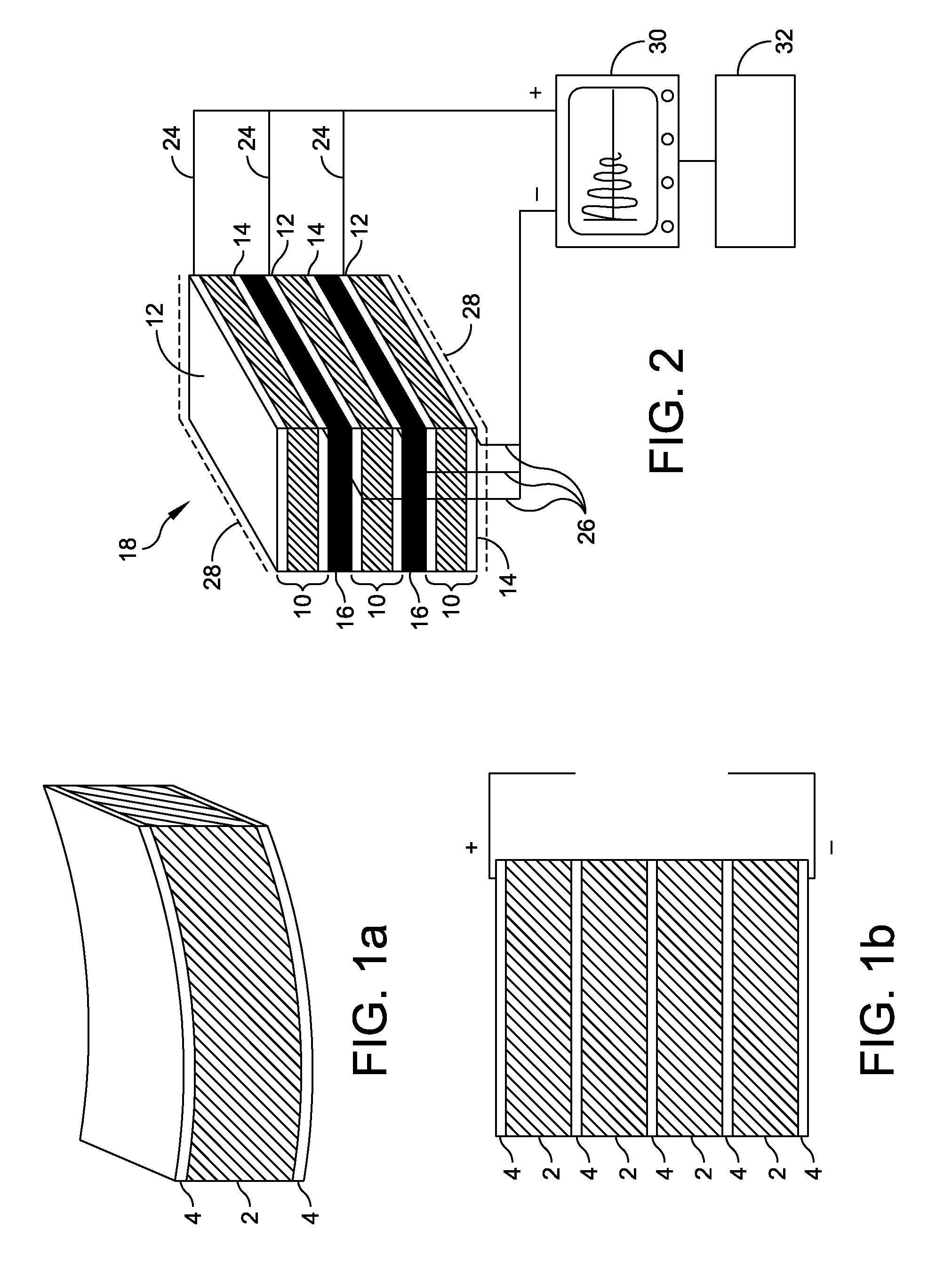Quasi-static bend sensor using electro-active materials
- Summary
- Abstract
- Description
- Claims
- Application Information
AI Technical Summary
Benefits of technology
Problems solved by technology
Method used
Image
Examples
Embodiment Construction
[0017]Referring now to FIG. 2 there is illustrated several Ionic Polymer Metal Composite (IPMC) sections 10 each section having a top conductive surface 12 and a bottom conductive surface 14. There is also illustrated multiple dielectric sections 16. In a preferred embodiment, the dielectric section 16 is made of a thin flexible light weight material. An example of dielectric section 16 is electrical insulating adhesive tape.
[0018]The IPMC sections 10 are stacked vertically in a modified morphing arrangement with a dielectric section 16 between the top conductive surface 12 of an IPMC section 10 below it and the bottom conductive surface 14 of an IPMC section 10 above it to prevent electrical conduction between the two surfaces. This modified morphing arrangement creates a multilayer configuration 18 of IPMC sections 10 and dielectric sections 16.
[0019]Each of the top conductive surfaces 12 of each IPMC section 10 serves as a positive electrode in the multilayer configuration 18. Ea...
PUM
 Login to View More
Login to View More Abstract
Description
Claims
Application Information
 Login to View More
Login to View More - R&D
- Intellectual Property
- Life Sciences
- Materials
- Tech Scout
- Unparalleled Data Quality
- Higher Quality Content
- 60% Fewer Hallucinations
Browse by: Latest US Patents, China's latest patents, Technical Efficacy Thesaurus, Application Domain, Technology Topic, Popular Technical Reports.
© 2025 PatSnap. All rights reserved.Legal|Privacy policy|Modern Slavery Act Transparency Statement|Sitemap|About US| Contact US: help@patsnap.com


